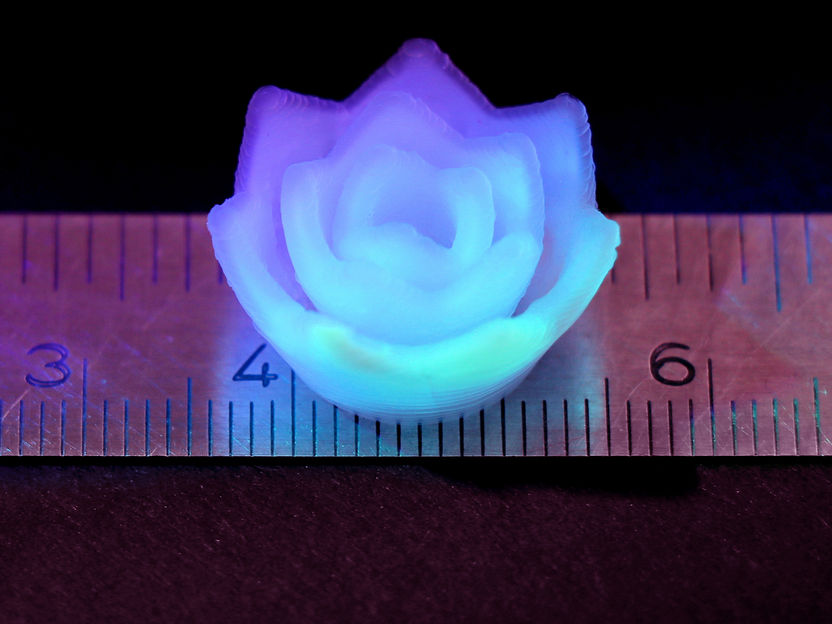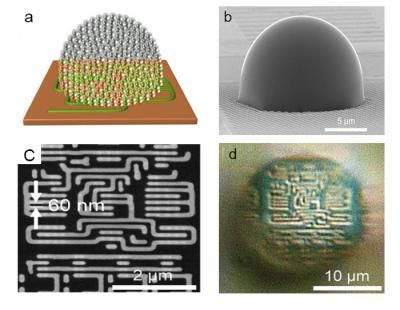Green-emitting lanthanoid nanocrystals demonstrate high intensity luminescence
Advertisement
Nanoscale luminescent crystals are in demand because they can be used as active components in monitors, LEDs, and optical intensifiers, and also as markers for the investigation of biomolecules. German researchers have now developed a green-emitting nanomaterial that luminesces with extraordinary intensity.
When energy in the form of an electric field, an electron beam, or UV light is applied to a luminescent material, it emits light with a visible wavelength. This occurs because an electron in the luminescent material is raised to a higher energy "level". When the electron then falls back down, it gives off its energy in the form of light, or luminescence. Luminescent nanocrystals have a big advantage over macrocrystalline materials; they are so tiny that they don't scatter visible light, so a transparent coating or plastic matrix does not become clouded. However, there is a serious disadvantage; the excitation energy can be passed from atom to atom within such crystals, and in very small particles quickly reaches the surface, where it can be transferred, without radiation, to the surrounding matrix. This largely "extinguishes" the luminescence.
A team of researchers from HASYLAB/DESY and the University of Hamburg has now found a way to reduce these energy losses in nanocrystalline lanthanoid materials (compounds containing the "rare earth" metals), which leads to an intensification of the luminescence: they enclosed the nanocrystals with a "shell". The starting material consisted of roughly five-nanometer crystals of a terbium-doped cerium phosphate, which emit green light when excited by UV light. The scientists, led by Markus Haase, crystallized a shell of lanthanum phosphate onto the crystals. This compound has a crystal lattice virtually identical to cerium phosphate, so that the two layers grow together seamlessly. "While the excitation energy can be transferred from one cerium atom to another, this energy transport doesn't work between cerium and lanthanum," explains Haase. " The lanthanum phosphate layer thus functions as a barrier to energy transport to the surface of the nanocrystals." The Hamburg researchers were thus able to produce a material that luminesces green with a quantum yield of 70 %. Quantum yield is a measure of how much of the incoming UV light is converted into luminescence. Says Haase: "Quantum yields so close to those obtained for macrocrystalline materials were, until recently, considered unattainable with nanocrystalline emitters."
Most read news
Other news from the department science

Get the chemical industry in your inbox
By submitting this form you agree that LUMITOS AG will send you the newsletter(s) selected above by email. Your data will not be passed on to third parties. Your data will be stored and processed in accordance with our data protection regulations. LUMITOS may contact you by email for the purpose of advertising or market and opinion surveys. You can revoke your consent at any time without giving reasons to LUMITOS AG, Ernst-Augustin-Str. 2, 12489 Berlin, Germany or by e-mail at revoke@lumitos.com with effect for the future. In addition, each email contains a link to unsubscribe from the corresponding newsletter.
Most read news
More news from our other portals
Last viewed contents
Strasbourg_Agreement_(1675)

Aerogel – the micro structural material of the future - Numerous new application possibilities in the high-tech industry, for example in microelectronics, robotics, biotechnology and sensor technology
































































